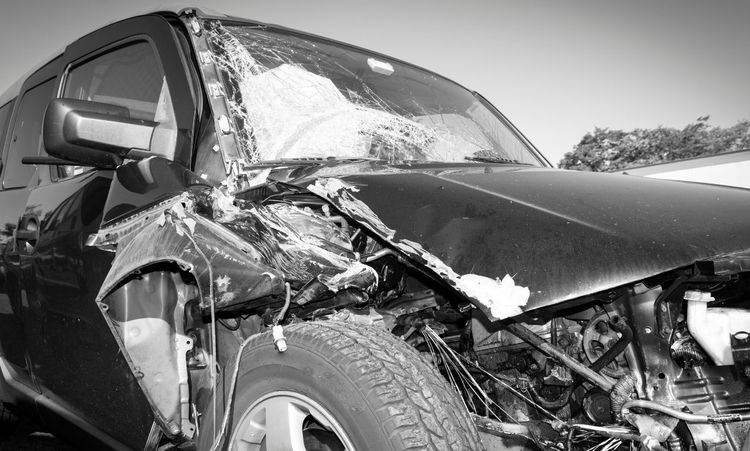There’s something magnetic about European cars. The sleek lines, the quiet hum of the engine, the badge on the hood—it all whispers luxury and precision. Owning one feels like joining an elite club. But not every car wearing a European badge tells the full story upfront.
Looks can deceive, and beneath that flawless paint might be a tangle of problems waiting to surface. That’s where a pre-purchase inspection—often called a PPI—steps in. It’s not just a smart move; it’s a shield against heartbreak and huge repair bills.
Before you sign papers or hand over a cashier’s check, get the car checked by someone who knows European engineering. In this article, we’ll explore why pre-purchase inspections are critical for European car buyers, how they save money, and why they make ownership far more rewarding.
European Cars Have Complex, Specialized Systems
European vehicles are built with precision and pride. They blend artistry with advanced mechanics. However, that very sophistication often means complexity.
Understanding the Complexity
Brands like BMW, Mercedes-Benz, Audi, and Jaguar design cars to perform beautifully and handle effortlessly. Each model is filled with sensors, software, and specialized mechanical systems. Even a minor issue in one component can send the entire system off balance.
For instance, many European cars have computer-controlled suspensions that adjust to the road. It sounds amazing—until a sensor fails. Then, your smooth ride becomes a bumpy, costly nightmare. These systems aren’t always compatible with generic diagnostic tools either.
Why Specialized Knowledge Matters
You can’t take a BMW to a mechanic who only works on pickups. The tools, diagnostic software, and repair procedures are completely different. Mechanics who specialize in European cars understand how those systems interact.
A pre-purchase inspection by a trained specialist uncovers problems that others might overlook. Think of it as a translator between you and your car’s complex engineering. That small investment gives you knowledge, which equals control.
European Cars Are Expensive to Repair and Maintain
The appeal of European cars is strong, but the costs behind them can shock new owners. These aren’t vehicles you maintain at your corner garage for a few dollars.
The True Cost of Repairs
An oil change for a domestic sedan might cost $60. The same service for an Audi or Volvo could easily double that. Genuine parts often need to be ordered from Europe. Labor rates are higher because technicians require specialized training.
Even routine jobs—like brake pad replacements—can involve electronic calibration. Forgetting that step can trigger warning lights or affect performance. These aren’t the kinds of mistakes you want to discover after purchase.
How a PPI Saves You Money
A pre-purchase inspection spots deferred maintenance and hidden problems before you buy. You learn whether the vehicle was serviced correctly, if parts were replaced with genuine ones, and whether the car’s condition justifies its price.
By catching issues early, you can negotiate a fairer deal or walk away altogether. Spending a few hundred dollars now could save thousands later. It’s not paranoia—it’s smart shopping.
Identify Potential Hidden Damage
No one wants to buy a car that looks perfect but hides damage underneath. Unfortunately, this happens more often than people realize.
What Inspectors Look For
A professional inspection involves more than glancing under the hood. Experts look for subtle clues—uneven paint, mismatched panels, or worn bolts that suggest past repairs. They also check for frame damage, rust, and signs of flooding.
Many European vehicles are imported secondhand, sometimes after accidents or floods abroad. A standard test drive won’t reveal those secrets. A detailed inspection, however, exposes them before you’re stuck with the consequences.
Protecting Yourself from Costly Surprises
Some damage can hide for months. A bent frame might not affect performance right away, but it could cause uneven tire wear or unsafe handling later. When inspectors uncover such problems, they save buyers from massive repair bills—or worse, unsafe vehicles.
Prevent Buying a “Lemon”
Buying a “lemon” feels like a punch in the gut. You drive home proud, only to discover endless mechanical issues.
How Inspections Help Avoid Lemons
A pre-purchase inspection is your best defense. It provides an unbiased look at the car’s true condition. Certified inspectors check the drivetrain, electrical systems, and every major component.
They’ll spot leaks, overheating problems, or transmission slips that the seller conveniently forgot to mention. Some even provide photographs or digital reports with specific recommendations.
Real Protection for Real Buyers
Many sellers aren’t dishonest—they simply don’t know the car’s full condition. A PPI removes guesswork. It gives you verified data, not promises. When you buy based on facts, you eliminate regret later.
If a car shows major issues, you can back out gracefully instead of facing constant breakdowns and stress. It’s better to lose a deal than lose your savings.
Ensure That All Features Are Functional
European cars often feel like rolling computers. From adjustable air suspensions to touchscreen infotainment systems, they’re loaded with technology.
Why Testing Every Feature Matters
During a pre-purchase inspection, technicians test every system—air conditioning, lights, sensors, seats, navigation, and more. Even something as small as a faulty parking sensor can point to deeper electrical problems.
It’s easy to miss small faults during a quick test drive. But those “small” issues can cost a fortune once you own the car.
Technology Should Work—Not Frustrate
Imagine buying a luxury car with broken climate control or malfunctioning seat heaters. You’d lose the comfort that drew you to the car in the first place. A complete inspection ensures every system works properly and matches the car’s value.
Verify the Vehicle’s History
Every car has a story. The question is—do you know it?
What a Vehicle History Check Includes
Inspectors review records from dealerships, service centers, and national databases. They verify mileage, ownership history, and accident reports. If a car was written off abroad and then imported, the inspection will uncover that history.
Mileage tampering is a common problem in used luxury vehicles. A history check exposes any inconsistencies between the odometer and recorded service data.
The Power of Knowledge
When you know the car’s true history, you can make decisions confidently. You understand what you’re buying, not what you’re being told. This transparency turns the buying process from a gamble into an informed choice.
Negotiation Leverage
Few people enjoy haggling, but when you have solid information, negotiation becomes easier.
Using the Report to Your Advantage
A pre-purchase inspection report is like an armor in negotiation. It lists defects, repair needs, and estimated costs. You can use that information to request a lower price or demand repairs before finalizing the deal.
If the seller refuses, you can confidently walk away. After all, you’re negotiating with evidence, not emotion.
Why Sellers Respect Serious Buyers
A buyer who orders an inspection sends a clear message: “I know what I’m doing.” Sellers respect that. They know you’re serious and informed. That often leads to fairer pricing and fewer surprises later.
Negotiating with knowledge shifts the power dynamic. It’s no longer about who talks louder—it’s about who knows more.
Peace of Mind
When all’s said and done, peace of mind is what every buyer really wants.
Confidence Behind the Wheel
Owning a European car should bring pride, not anxiety. Knowing it’s been professionally inspected removes doubt. Every time you drive, you can trust that the car beneath you is safe and sound.
That feeling is priceless. You enjoy the drive instead of worrying about what could go wrong next week.
Emotional and Financial Security
Cars are emotional purchases. We fall for their design and comfort, often ignoring practicality. But emotion should never replace reason. A PPI balances both. It protects your heart and your bank account.
Think of it as buying confidence. Instead of wondering, “Did I make a mistake?” you’ll be thinking, “I made the right call.”
Conclusion
European cars stand apart for their engineering and elegance. They’re not just vehicles—they’re experiences. Yet their sophistication demands responsibility from buyers.
Skipping a pre-purchase inspection is like buying a house without checking the foundation. You might not notice problems right away, but they’ll find you eventually.
When you understand why pre-purchase inspections are critical for European car buyers, you start seeing them as essential, not optional. They uncover hidden flaws, prevent financial disasters, and give you leverage during negotiation.
Before falling for the shine of chrome and the rumble of an engine, pause. Ask yourself: “Has this car been inspected by someone who truly understands it?” If not, hold your checkbook. The best decision might be waiting for the right car—one that’s verified, tested, and ready for years of joy.




